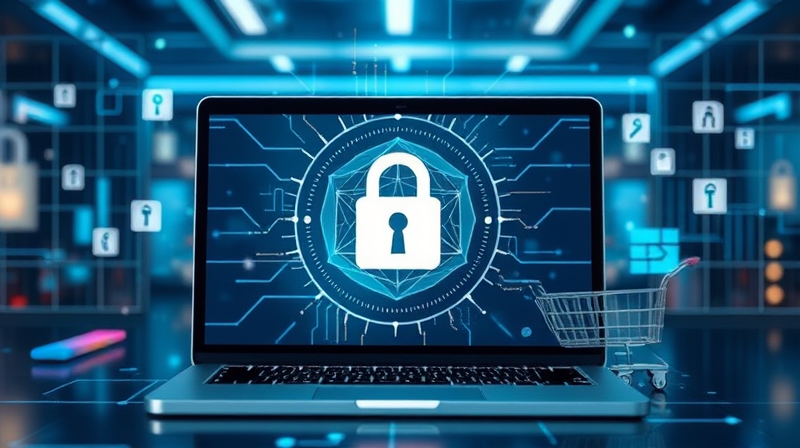In today’s digital age, online shopping has become a daily ritual for millions of people. With the convenience of browsing and buying from the comfort of our homes, the risks associated with e-commerce have also increased dramatically. From hidden fees and counterfeit product traps to phishing scams and deceptive seller practices, the modern consumer must be both informed and cautious in order to navigate the online marketplace safely and smartly.
This comprehensive guide serves as a valuable resource, offering insights and practical tips to help you sidestep potential pitfalls. Whether you are a frequent shopper or a small business owner, understanding these dangers—and how to effectively counter them—can make all the difference in protecting your hard-earned money and personal information.
Understanding the Threat Landscape
The digital marketplace is a double-edged sword. On one hand, it provides unparalleled convenience and access to products from around the world; on the other, it exposes consumers to a variety of frauds and risks that can lead to unexpected losses.
One of the predominant issues faced by online shoppers is the rise of counterfeit products. These fake goods can range from imitation designer items to substandard electronics that pose serious safety risks. In today’s rapidly evolving e-commerce environment, marketplaces like Etsy and eBay have ramped up their commitment to fighting counterfeit merchandise through advanced AI-powered detection systems and rigorous transparency initiatives.
Another lurking danger comes in the form of phishing scams. Fraudsters often disguise themselves as reputable companies, sending emails or texts that appear to come from trusted brands. They aim to harvest sensitive information such as passwords or payment details by exploiting subtle errors such as misspellings or odd sender addresses. As these scams become ever more sophisticated, it is crucial for consumers to remain vigilant.
- Spot counterfeit products: Be wary of deals that are too good to be true and always verify the credibility of the seller.
- Avoid phishing traps: Double-check sender information, avoid clicking on suspicious links, and never share your personal data unless you are certain of the source.
Hidden fees add another layer of complexity to the online shopping experience. It is common for additional charges to be camouflaged within the fine print—fees related to shipping, taxes, or ambiguous return policies can suddenly inflate your purchase cost. Therefore, it is of utmost importance to read the entire breakdown of costs before finalizing any transaction.
Understanding payment transparency is vital. Legitimate retailers will provide you with a complete and transparent overview of all charges before you commit to a payment. If a website delays revealing additional costs until the final steps of checkout, it might be operating in a less than honest manner.
To enhance your protection, always consider using a credit card when shopping online. Credit cards generally offer robust dispute resolution mechanisms and fraud protection policies compared to debit cards. Coupled with shopping on secure sites that display the "https://" prefix and a padlock symbol in the address bar, you greatly reduce your risk of encountering scams. As a security measure, many top-tier online retailers have integrated advanced encryption methods like tokenization and real-time fraud monitoring to safeguard your transactions.
Regularly updating your devices, passwords, and browser security settings is also key to protecting your personal information. Creating unique and complex passwords for various accounts, along with employing reputable password managers, can help secure your digital life against unauthorized access.
Regulatory oversight plays a crucial role in ensuring safer e-commerce practices. For instance, as part of recent updates to the General Product Safety Regulation (GPSR) in the EU, e-commerce sellers are now mandated to conduct risk assessments and provide clear labeling and safety warnings on products. These measures empower consumers by offering clear recourse options in the event of defective or unsafe products.
Privacy and data protection are also paramount concerns in modern e-commerce. With stringent data protection laws such as the GDPR and CCPA in place, reputable retailers are legally bound to handle your personal data responsibly. This means that when you choose to shop online, it is wise to verify that the retailers you are dealing with have transparent privacy policies and comply with local regulations.
If you ever come across suspicious activity or questionable listings, do not hesitate to report it using the resources provided by reputable e-commerce platforms. Many websites offer specific channels for reporting scams, counterfeit products, or any irregular behavior. These reporting tools serve as the first line of defense in mitigating widespread e-commerce fraud.
For those involved in running an online business, partnering with cybersecurity experts not only ensures that your own operations are safe, but it also instills confidence in your customer base. Regular system assessments and security audits can highlight vulnerabilities in your digital storefront, enabling you to patch them before they are exploited by malicious actors.
Ultimately, a mindful and informed approach to online shopping is essential for safety in today’s ever-evolving digital marketplace. By remaining cautious, keeping abreast of the latest regulatory changes, and utilizing available security tools, you can turn the tide in favor of safe and savvy e-commerce experiences.
This guide encourages you to be proactive in your approach to online transactions. Adopt a thorough and skeptical mindset when evaluating offers and remember that your diligence is your best defense against falling prey to hidden fees or digital scams. In a world where benefits and risks coexist, taking the necessary precautions will help you not only avoid immediate losses but also contribute to a more secure and trustworthy online retail environment for everyone.







